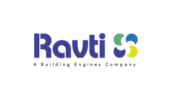It is impossible for a man to learn what he thinks he already knows.
-Epictetus
It’s rarely easy to initiate a new order of things. As someone who often deploys BEI to new customers with no prior system or technology in place, I am familiar with the challenge of showing users the value of a new process. The software and methods associated with using it can help them in their day to day operations, but first they need to understand how and not view it as a Big Brother system. A new software or technology isn’t just a new license or tool – it’s a change in how your team does something, if you want it to be effective.
How do you take your staff (who potentially never had to even use a computer in their job before) from viewing the technology as an added responsibility to regularly employing it as a helpful tool?
A few things have to happen first:
1. Prove the system is easy to use.
I’ve come across many new BEI users who use computers very little, even in their personal lives. The thought of having to type a request into a machine can be overwhelming to them. Through trainings I am able to show them not only how simple it is to enter a work order but also the benefits of using the web-based system. Such a feature that is initially found overwhelming by some, is often highly touted once they are comfortable using it.
Show them how easy it is to use, and how easy it will be to do their job. For us, that often means explaining how users can now track the progress of their work orders in real time, right from a work station – without tracking down the maintenance man who was doing the work for a status update.
2. Demonstrate the superiority of the new process.
This is a little harder. Staff members may have worked at a facility for 30 years and are used to the processes in place – aka resistant to change. Maybe a process was considered effective in the past – but how does it now allow for things to fall between the cracks, eat up precious time, or keep an employee from realizing their full potential?
Give relatable examples where a paper-based or previous system has hold-ups and set-backs that the new process circumvents. For Building Engines users, I make it clear how the new process allows for visibility on both sides of the application (Maintenance and Work Requestors), immediate notification and faster response to requests, clear guidelines for staff, etc. Usage always improves once all parties can see the mutual benefit.
3. Debunk the Big Brother fear.
When a new system like BEI is deployed to a facility that never used a system before, the consensus among the day-to-day users is sometimes, “Well this is just a way that they can track every move we make and justify firing us if we don’t put everything we do into the computer.” The challenge here is convincing users this tool is monitoring activity to help, not hurt them.
It’s not uncommon for staff members to complain they are overworked and this new system is just going to be another burden in their already busy schedule. In my experience, explaining that the tool can analyze work hours and justify if the facility needs to hire more staff members is a huge selling point in the adoption process. I find that showing an engineer they can run a report that shows they have logged 60 hours in a 40 hour work week can be a very convincing way to get them to start using the system.
Show members involved the usage perks, reports and end results – where they can be if they use what’s there. Greater visibility creates the ability for a user to prove to their boss that they are extremely valuable to the team – and could possibly use an extra set of hands!
In the end, investing in technology is worthless if it’s not effectively adopted. With training and a lot of hand holding in the beginning, users can successfully adopt a new system and integrate it into their daily routines.











